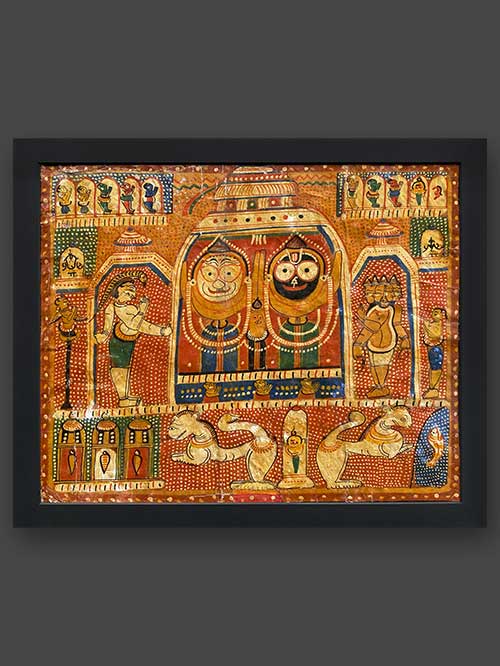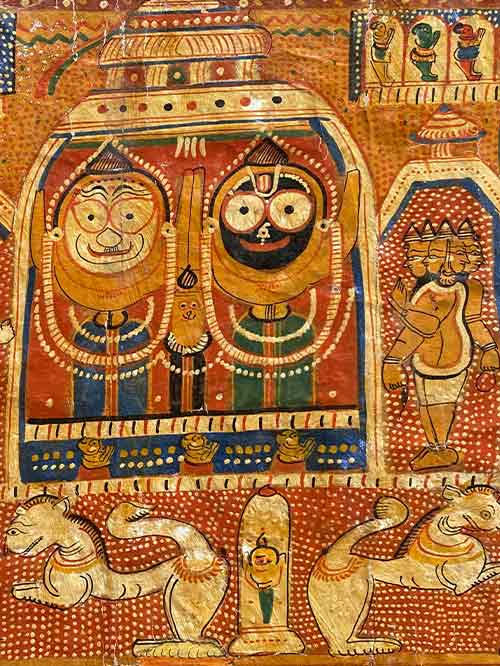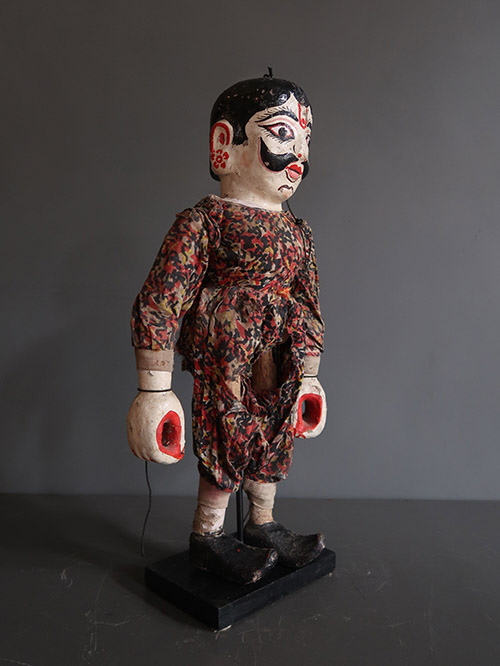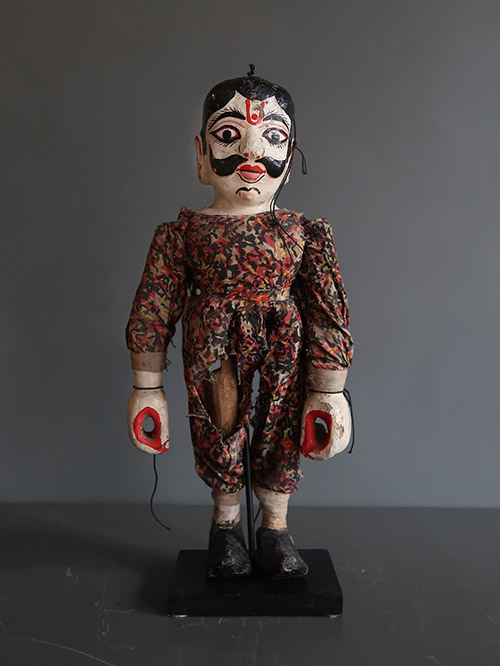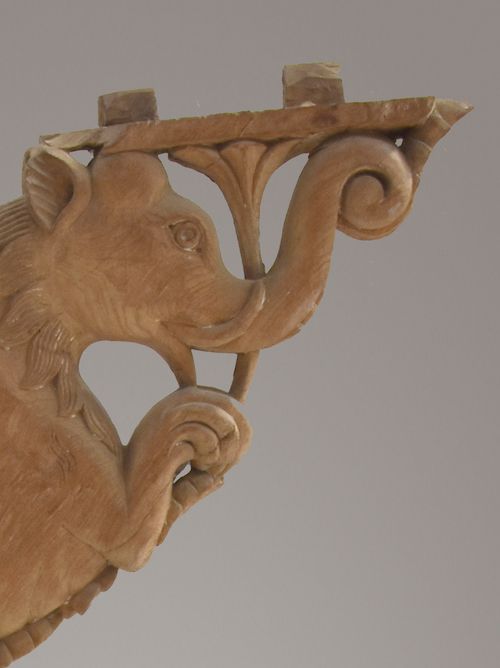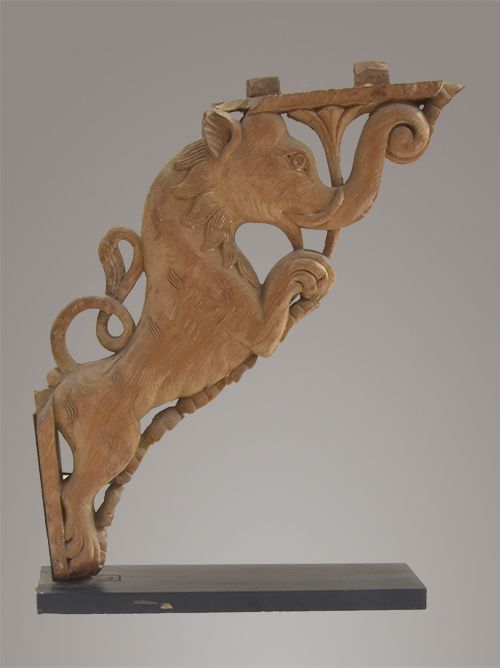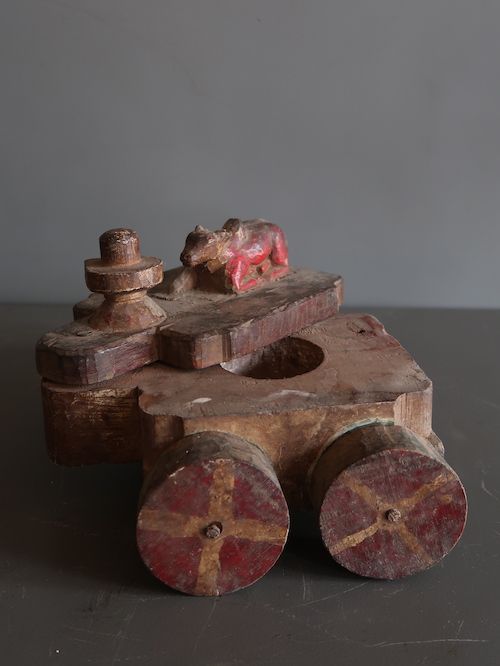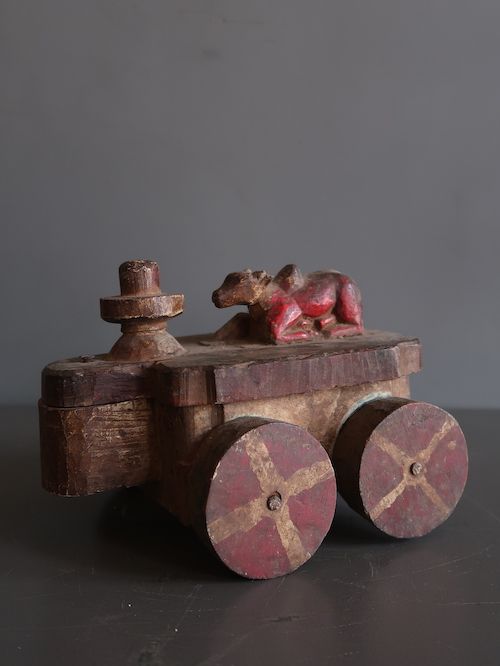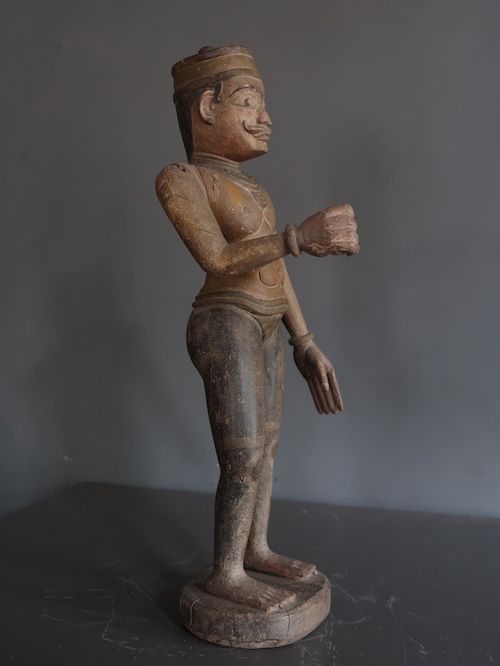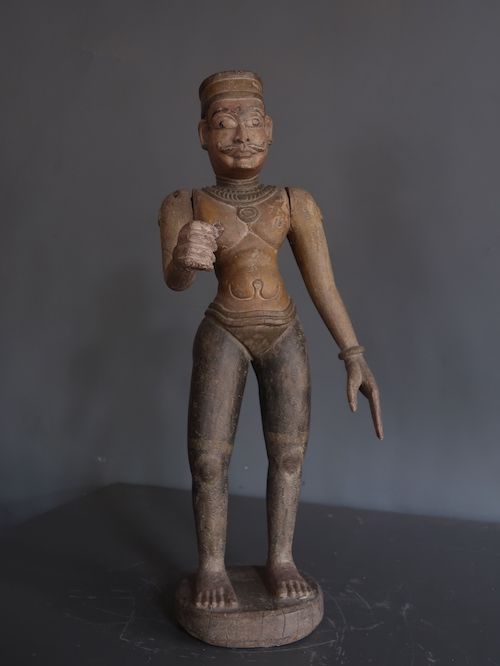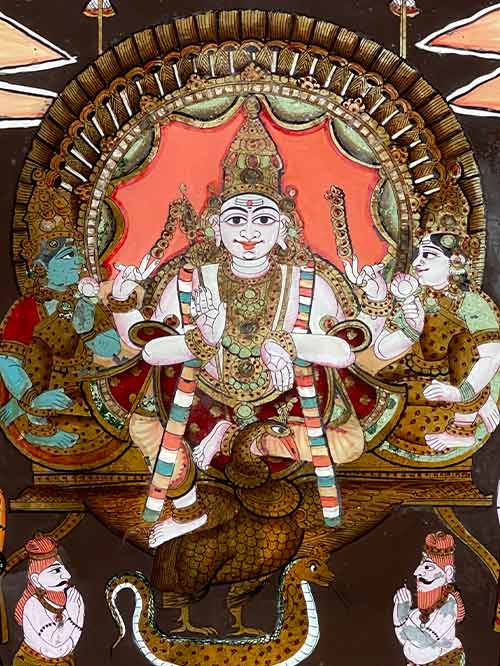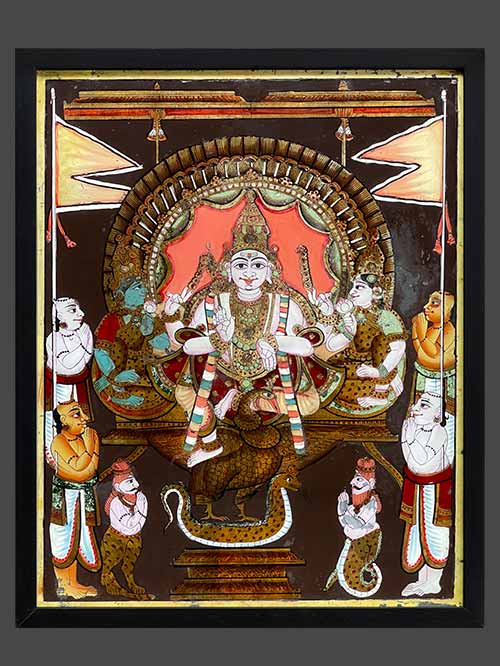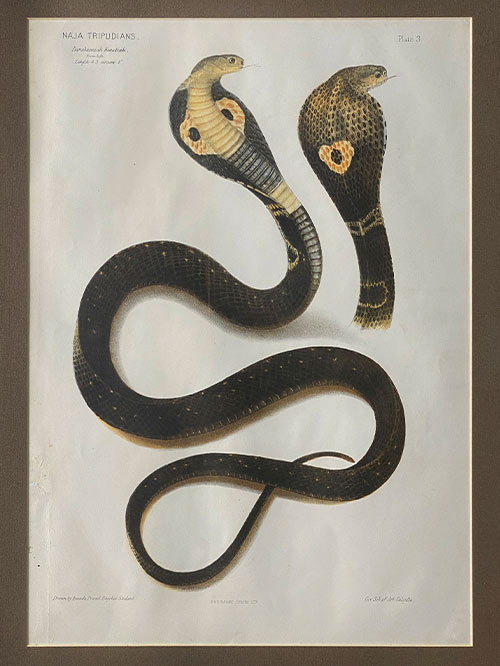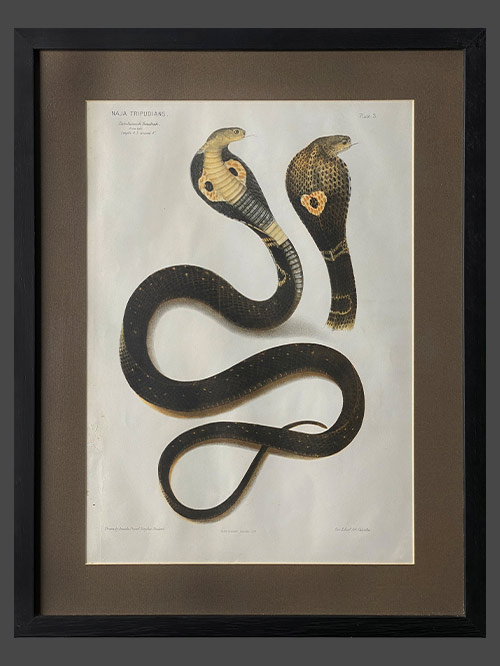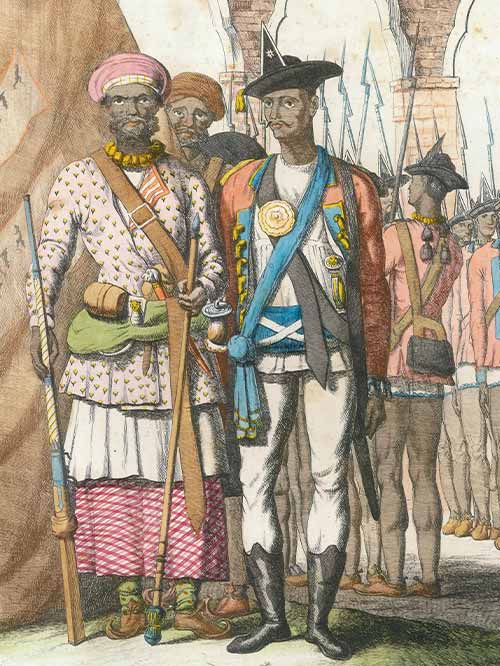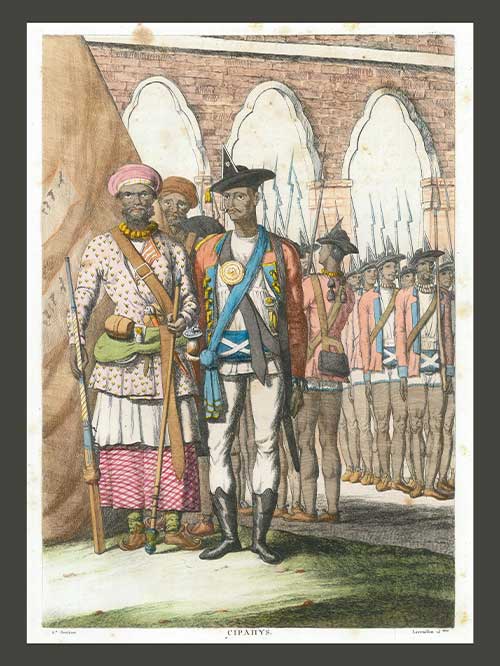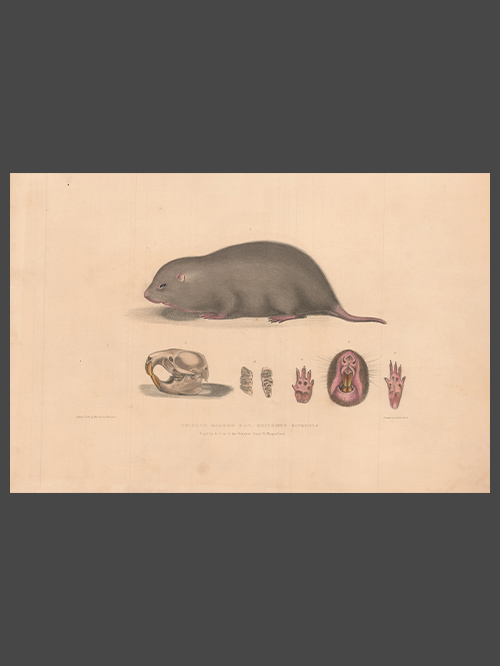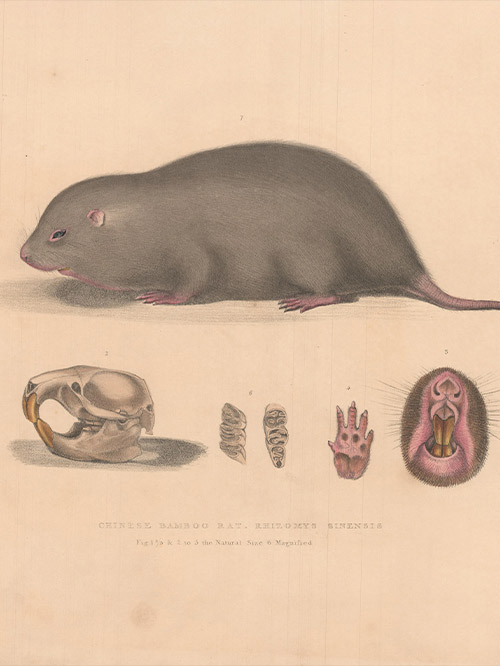Orissa, Puri district
Gouache and lacquer on cotton cloth
The Jagannatha temple complex dominates the diagram, featuring the central shrine within a towering shikhara. Two male figures, Jagannatha and Balabhadra, are depicted dancing with raised yellow wing-like ‘arms’, while the female Subhadra stands between them. Below the central shrine, panels show priests with hands joined in prayer. To the left of the central trio is Shiva, portrayed in white with a serpent crown, also in a prayerful pose. On the right, multi-headed Brahma is depicted, offering reverence to the central deities. At the base of the temple, a pair of leogryphs forms the Lion Gate, with a small image of Jagannatha enclosed in a shrine inbetween. Flanking the temple shikhara at the top are the ten avatars of Vishnu, with Jagannatha replacing Buddha as the ninth avatar.
Puri painting, one of India’s oldest popular iconic traditions, is associated with the regional cult of Jagannatha, a manifestation of the god Vishnu, and with the ancient pilgrimage centre of Puri in Orissa on the eastern coast of India on the Bay of Bengal, where the cult took hold. The painting tradition evolved to serve the cult, with painters playing an important role. This type of painting was produced for pilgrims to carry home for display and private worship of the Jagannatha trinity. The image also provides pilgrims with a visual aid to remembering and renewing the entire pilgrimage experience, that is, visiting not only Jagannatha temple but also other shrines in the environs and being present for various daily or festival ritual activities.
Size (cms): 33.5(H) x 41(W)
Size (inches): 13(H) x 16(W)

